Home for the Holidays
During the holidays, it is time to think about “decking (decorating) the halls” but don’t forget to think about decorating the mantles, doors, outside walkways and ground covers, porches, tables and other areas. There are many traditional plants we commonly associate with the holidays and Christmas but there also are less well-known plants you may want to consider this year.
This chart looks at some characteristics of plants that may be important for your decision making. For instance, can the plant be grown inside or outside or both? Is the plant toxic? In what USDA growing zone will the plant grow? (Marion County Florida has been identified as being in the USDA zone 9.)



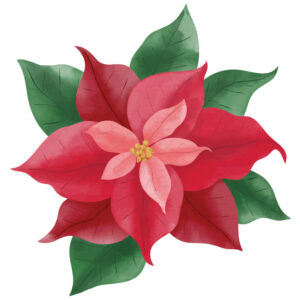 Poinsettia
Poinsettia
GENUS/SPECIES: Euphoria pulcherrima
USES: Outside can be used as small trees or shrubs, floral displays
in homes, businesses and churches.
TOXICITY: Very low level of toxicity for both animals and humans.
INSIDE/OUTSIDE: Yes, but susceptible to frost. Best if kept at greater than 50 degrees F and avoid drafts.
USDA ZONES: Zones 9 to 11
INTERESTING INFORMATION: Came from Mexico in 1820. 70 million poinsettias are sold in the U.S. in 6 weeks.
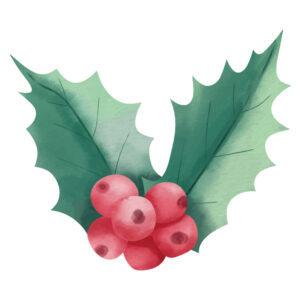
East Palatka Holly
GENUS/SPECIES: Ilex x attenuata
USES: Cuttings from the trees are used for decorations, table centerpieces, door wreaths, table greenery and mantle décor. Food for 18 species of birds, squirrels, deer and other wildlife.
TOXICITY: Yes, both to humans and pets.
INSIDE/OUTSIDE: Outside: 30 to 40 feet tall; need female and male plants.
USDA ZONES: Zones 9 to 10
INTERESTING INFORMATION: Drought resistant. Female trees have the berries.
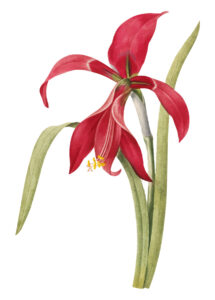
Amaryllis
GENUS/SPECIES: Hippeastrum
USES: Container houseplants as well as walkways and garden beds.
VARIETY OF COLORS: White and red are the most traditional at Christmas.
TOXICITY: Yes, to both humans and animals. Bulbs are the most toxic part to humans and all parts to animals.
INSIDE/OUTSIDE: Yes, inside and outside.
USDA ZONES: Zones 7b to 10
INTERESTING INFORMATION: Perennial; originated in South America.
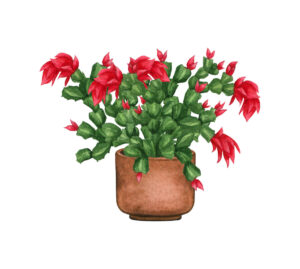 Christmas Cactus
Christmas Cactus
GENUS/SPECIES: Schlumbergera bridgesii
USES: Container.
TOXICITY: Low toxicity for humans and pets, but still wise to not let them eat or chew on it.
INSIDE/OUTSIDE: Yes, usually in containers. Can grow on rocks also.
USDA ZONES: Zones 9 to 11
INTERESTING INFORMATION: Perennial: Can live up to 100 years (most from 20 to 30 years). Easily propagated. Prefers partial shade. Originated in Brazil. A succulent plant.
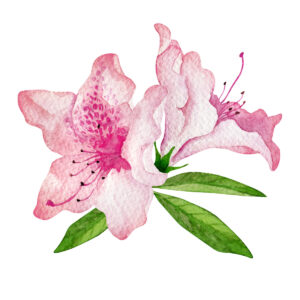
Fashion Azalea
GENUS/SPECIES: Rhododendron x “Fashion.” A cultivar.
USES: Garden bed shrub; container house plant. Can bloom in December. Adds beautiful red colors to the outside shrubs and inside container plants.
TOXICITY: Yes, to human and pets as well as livestock. Level of toxicity varies.
INSIDE/OUTSIDE: Yes; inside and out. Can grow up to 5 feet high and 5 feet wide.
USDA ZONES: Zones 7 to 10
INTERESTING INFORMATION: Rich red- and salmon-colored varieties. A cultivar, a cultivated variety, is typically a man-made variety of plant (often made by grafting, tissue culture or controlled seed production).
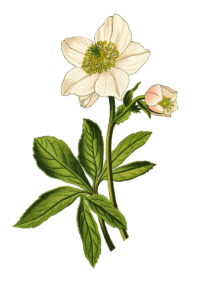 Christmas Rose
Christmas Rose
GENUS/SPECIES: Helleborus niger
USES: Garden borders, walkways, containers in the house or porch. Height: 8 inches to 1 foot. Perennial
TOXICITY: Yes, to animal and humans. Best for humans to wear gloves when handling.
INSIDE/OUTSIDE: Inside and outside. Prefers partial to full shade.
USDA ZONES: Zones 3 to 8
INTERESTING INFORMATION: Search on the internet for the “Legend of the Christmas Rose” and learn of the shepherdess, Madelon and how her gift of the Christmas Rose came to be. Blooms open in winter in warmer climates.
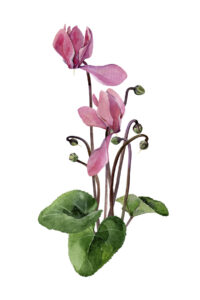 Cyclamen “Sowbread”
Cyclamen “Sowbread”
GENUS/SPECIES: Primulaceae persicum
USES: Potted plants, ground cover, large showy winter flowers.
TOXICITY: Tubers are toxic to animals. Humans shouldn’t chew on the tubers either.
INSIDE/OUTSIDE: Yes, inside and outside. Prefers temperatures from 40 to 80 degrees Fahrenheit. Dormant September to early December. Needs well drained soil and indirect light. In Florida mostly inside.
USDA ZONES: Zone 9A
INTERESTING INFORMATION: Origin: mid-East/Mediterranean. Called the incense of the Virgin Mary. Muslim and Christian lore associate the plant with the Virgin Mary; shepherds used the tuber as a type of soap; in plant language it means sincerity and affection.
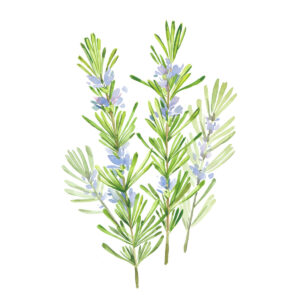 Rosemary
Rosemary
GENUS/SPECIES: Rosmarinus officinalis
USES: Beautiful aromas for wreaths, mantle trimmings, table trimmings; seasoning for turkey or gravies and inside or outside topiaries.
TOXICITY: Excessive amounts of rosemary can affect some people. When used as wreaths and mantel trimmings low to no toxicity. Not toxic to cats and dogs.
INSIDE/OUTSIDE: Yes, inside, and outside. If planted outside, it can be a shrub that reaches 5 feet tall and 4 feet wide.
USDA ZONES: Zone 8 and further south
INTERESTING INFORMATION: Origins in the Mediterranean; it has many cultivars. The plant was popular in the 19th century and is now making a come-back. In plant language it means love and remembrance.
Choose traditional plants and create wonderful table, mantle, door decorations or plant beds of holiday colors for your yard. Or choose less traditional ones and spruce up your porches, yards, or indoor decorations. Enjoy our beautiful Florida weather and the many opportunities we have for plants, whether in garden beds or containers, or parts and pieces used for decorating.
May your holidays be merry and bright. May they be full of plants, flowers, aromas, friends and family. And may peace and joy be with you.





